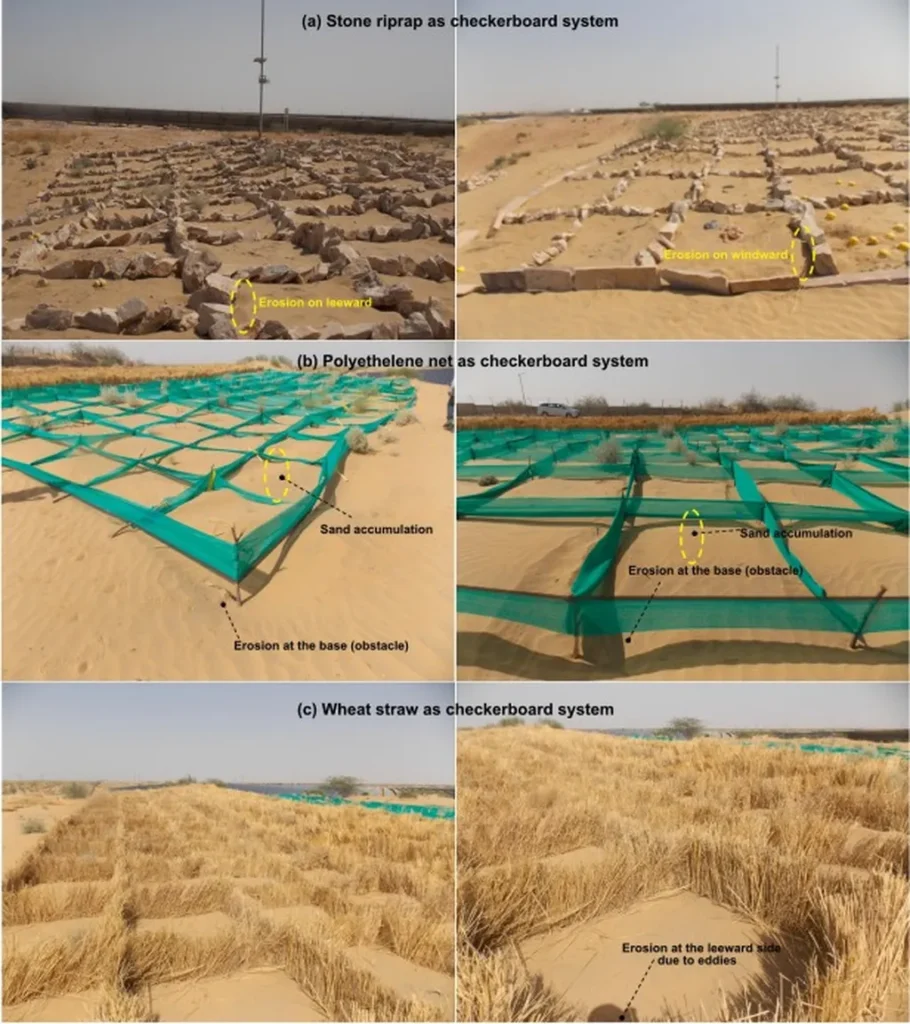In the heart of Iran’s Yazd province, a team of researchers led by Ali Shahriar from an undisclosed affiliation has unveiled groundbreaking insights into the origins and movements of sand dunes, with implications that could reshape how we manage and mitigate the impacts of wind erosion, particularly in the energy sector. Their study, published in the journal ‘Geography and Environmental Sustainability’ (جغرافیا و پایداری محیط), offers a comprehensive analysis of the sand dunes near Yazd’s Darvazeh Quran, a region of significant importance due to its proximity to the city and its potential for tourism development.
The research, which spanned two decades of wind data analysis, satellite imagery, and field studies, identified the primary sources of sand dunes and the mechanisms driving their formation and movement. “Understanding the origin of sand dunes is crucial for effective management and control of wind erosion,” Shahriar explained. “Our findings indicate that the alluvial and flood plains, along with alluvial deposits located in the northwestern and western parts of the region, are the main sources of nutrition for the sandy dunes of Darvazeh Quran.”
The team utilized a multifaceted approach, combining wind data from the Yazd synoptic station, topographic and geological maps, satellite images from 1993 to 2017, and extensive field studies. Their analysis revealed that strong northwest winds during the dry seasons play a pivotal role in the formation and movement of sand dunes. Mineralogical investigations and XRF analysis further highlighted that quartz minerals and carbonates are the most abundant components of the sand sediments, with averages of 45% and 33%, respectively.
One of the most innovative aspects of the study was the use of satellite imagery to identify mineral compositions. “We found that specific band ratios in satellite images, such as 4.5, 3.4, and 3.5 in TM images, can be used to identify quartz and carbonate minerals,” said Shahriar. This method not only provides a non-invasive way to study sand dunes but also offers a cost-effective solution for monitoring and managing these dynamic landscapes.
The implications of this research are far-reaching, particularly for the energy sector. Wind erosion and sand dune movement can pose significant challenges to infrastructure, including solar and wind farms, which are increasingly being developed in arid regions. By understanding the origins and pathways of sand dunes, energy companies can better plan and mitigate potential risks, ensuring the longevity and efficiency of their projects.
Moreover, the study’s findings could inform urban planning and tourism development in regions prone to wind erosion. “Knowing the harvesting points or the origin of sand dunes is the most important and fundamental way to fight against wind erosion,” Shahriar emphasized. This knowledge can guide the development of sustainable practices and strategies to protect both natural and man-made structures.
As the world continues to grapple with the impacts of climate change and desertification, studies like this one are invaluable. They provide a roadmap for understanding and managing the dynamic forces shaping our planet’s landscapes. The research conducted by Shahriar and his team not only advances our scientific understanding but also offers practical solutions for a more sustainable future.
In the words of the lead author, “This research is a stepping stone towards better management of natural resources and control of risks caused by sand dunes.” As we look to the future, the insights gained from this study will undoubtedly play a crucial role in shaping policies and practices aimed at mitigating the impacts of wind erosion and promoting environmental sustainability.

